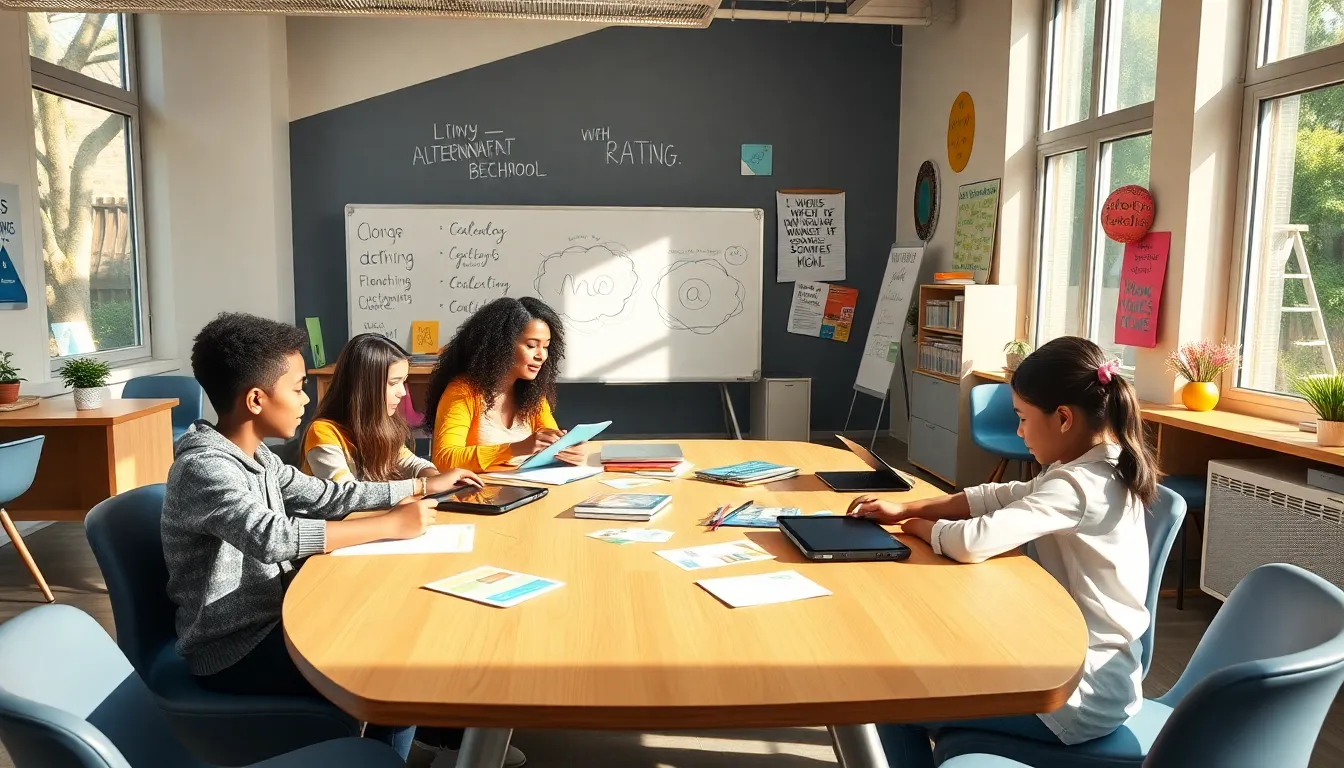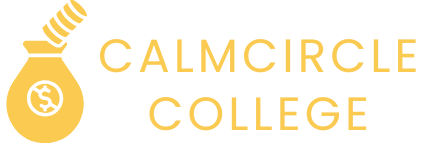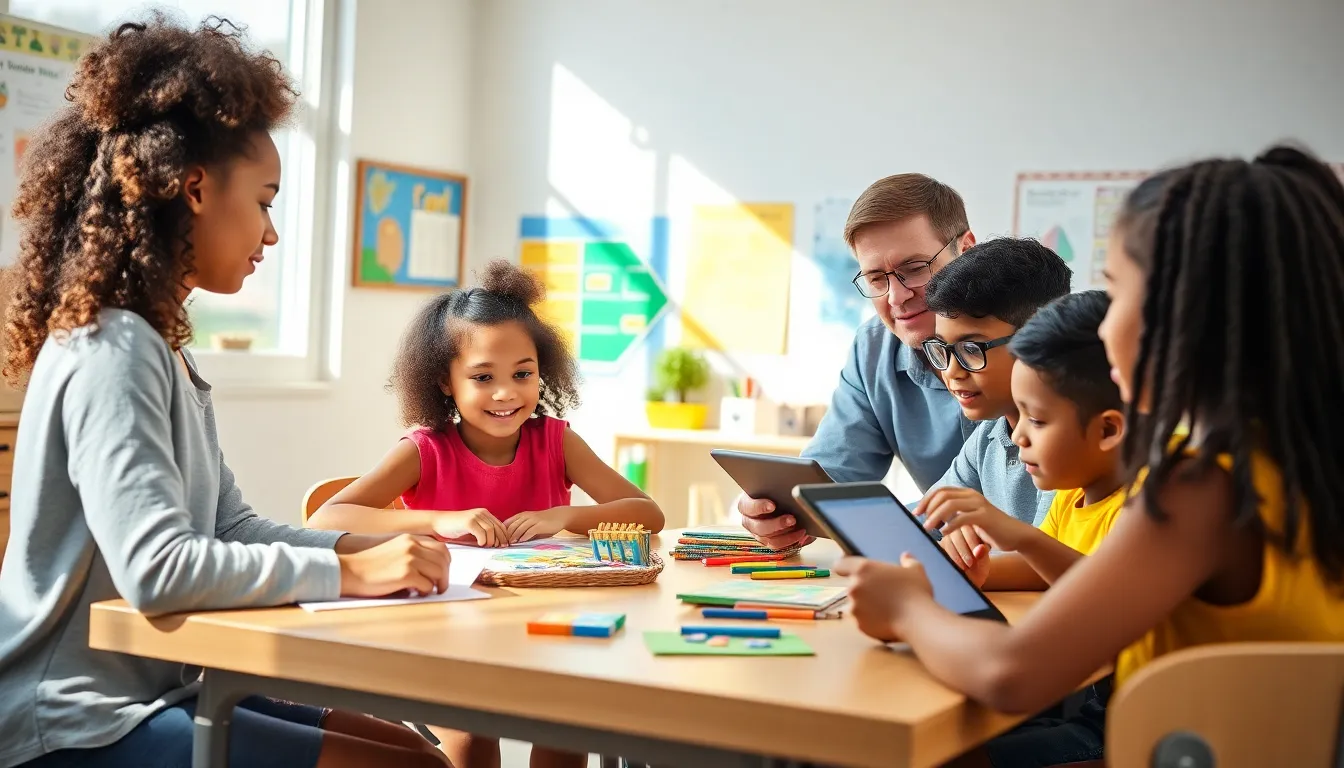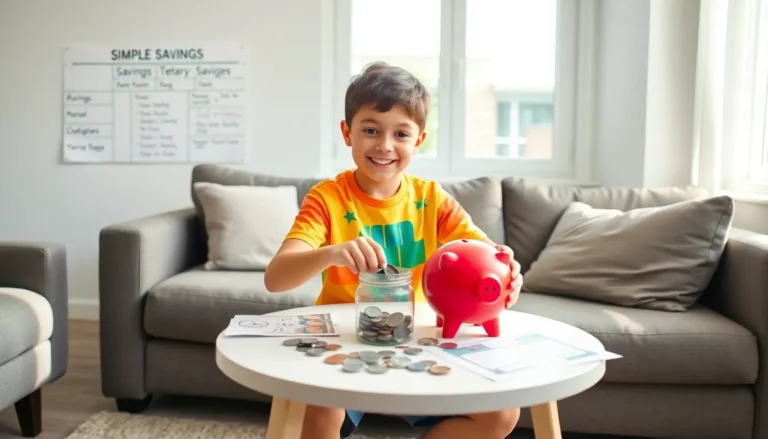Imagine a world where learning isn’t confined to the four walls of a traditional classroom. Sounds dreamy, right? Welcome to the realm of alternative education programs, where creativity and passion give way to a unique approach to learning. In an era where innovation is the name of the game, these programs aim to cater to diverse learning styles and needs, often making education accessible and enjoyable. Let’s jump into what these programs are all about, explore their various types, and unravel why they might just be the solution your child needs for a brighter future.
Table of Contents
ToggleWhat Are Alternative Education Programs?

Alternative education programs present a refreshing shift from conventional schooling methods. Designed to meet the needs of students who may struggle in traditional settings, these programs emphasize personalized learning experiences. They often provide a flexible, student-centered approach, welcoming various teaching styles and educational philosophies. So, what exactly distinguishes these programs from traditional education? For starters, alternative education focuses on more than just textbooks and test scores. It nurtures social, emotional, and cognitive development by incorporating experiential learning opportunities. This allows students to engage deeply with the material, fostering critical thinking and problem-solving skills that are essential in today’s fast-paced world.
Types of Alternative Education Programs
Alternative education isn’t a one-size-fits-all model: it branches into a variety of formats tailored to different learning styles and needs. Here are some notable types:
- Montessori Schools: These institutions encourage independent learning through a hands-on approach. Students engage in self-directed activities that promote exploration and creativity.
- Waldorf Schools: Focusing on holistic development, Waldorf education integrates arts and academics. It nurtures imagination and emotional intelligence, fostering well-rounded individuals.
- Charter Schools: Funded by public money but operating independently, charter schools often provide unique curricula and teaching styles aimed at improving student outcomes.
- Homeschooling: This flexible option allows parents to take charge of their child’s education, choosing materials and methods that suit their individual learning pace.
- Online Learning Programs: With the advancements in technology, virtual schools have exploded in popularity, offering flexible schedules and the ability to learn from anywhere.
- Alternative High Schools: For high school students at risk of dropping out, these institutions provide tailored support systems and curriculum alternatives focused on engagement and success.
Benefits of Alternative Education Programs
The allure of alternative education programs lies in their numerous benefits that cater to students’ diverse learning needs.
- Personalized Learning: One of the standout features is their emphasis on tailored learning experiences. This personalization allows students to explore subjects at their own pace, making comprehension more achievable.
- Enhanced Engagement: Alternative programs often encourage creative thinking and problem-solving, resulting in more engaged students. When learners are active participants in their education, the excitement to learn truly blossoms.
- Supportive Environment: Many alternative plans foster a close-knit community where students feel safe and valued. This nurturing atmosphere significantly boosts confidence, vital for their academic and emotional development.
- Diverse Curriculum: They often incorporate a multidisciplinary approach, bridging various subjects while also emphasizing life skills such as teamwork and responsibility.
- Focus on Social Skills: Given that many programs prioritize collaboration, students frequently develop essential social skills beneficial for future work and study environments.
Challenges Faced by Alternative Education Programs
While alternative education programs shine in many areas, they are not without their challenges.
- Funding Issues: Many alternative schools rely on public funding, which can fluctuate. Limited resources may restrict the program’s ability to offer a comprehensive curriculum.
- Standardization Concerns: With government mandates emphasizing standardized testing, alternative programs may struggle to align their personalized approaches with these requirements, leading to conflicts in educational outcomes.
- Perception and Stigma: Some people still perceive alternative education as inferior. This stigma can be detrimental to students’ confidence and the respective program’s credibility.
- Qualified Staff: Recruiting well-trained educators who align with the unique teaching philosophies of alternative education can be challenging. An effective team is critical to carry out the educational vision effectively.
How to Choose the Right Alternative Education Program
Selecting the ideal alternative education program can feel a bit overwhelming, but a thoughtful approach can simplify the process significantly. Here are key factors to consider:
- Identify Learning Needs: Assess the child’s learning style, academic needs, and emotional requirements. It’s essential to find a program that aligns with these factors.
- Research Program Philosophy: Understand the program’s educational philosophy and goals. Whether it’s Montessori, Waldorf, or another type, ensure it aligns with your educational values.
- Visit the Institution: If possible, visit potential schools to get a feel for their environment. Speaking with teachers and observing classes can provide valuable insights.
- Evaluate Curriculum and Extracurricular Activities: Look for programs that offer a well-rounded curriculum along with relevant extracurricular activities that foster growth and engagement.
- Connect with Other Parents: Seeking out feedback from other parents can shed light on the program’s strengths and weaknesses, helping make an well-informed choice.
Success Stories: Case Studies of Alternative Education
Let’s highlight some shining examples of alternative education success stories:
- Anna’s Journey: Struggling with traditional methods, Anna thrived in a Montessori school where she was allowed to explore subjects at her own pace. Today, she’s pursuing a degree in environmental science, actively advocating for sustainable practices.
- James’s Turnaround: Once considered at-risk, James found renewed motivation in an alternative high school that valued his interests and provided individualized support. Now, he’s a successful entrepreneur, running his own small business.
- The Garcia Family’s Homeschooling Experience: The Garcias embarked on a homeschooling journey and created a customized curriculum. Their children excelled academically and developed a love for learning they might not have found in traditional school settings.
The Future of Alternative Education Programs
Alternative education programs are here to stay, with their future looking bright as society increasingly recognizes the need for diverse learning approaches.
- Integration of Technology: As educational technology evolves, expect alternative programs to leverage online resources and tools, enhancing interactive learning experiences.
- Greater Acceptance: A shift toward personalized education and holistic learning may lead to broader acceptance within society, reducing stigmas associated with alternative education.
- Collaborative Learning Models: Expect to see more collaborative partnerships between traditional schools and alternative institutions, forming hybrid models beneficial for students’ diverse needs.
- Increased Customization: As new research emerges about how students learn best, alternative programs will likely carry out innovative, customized curricula aimed at fostering creativity and critical thinking.




